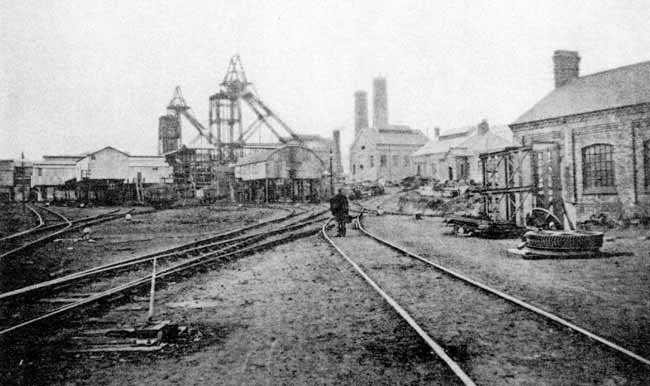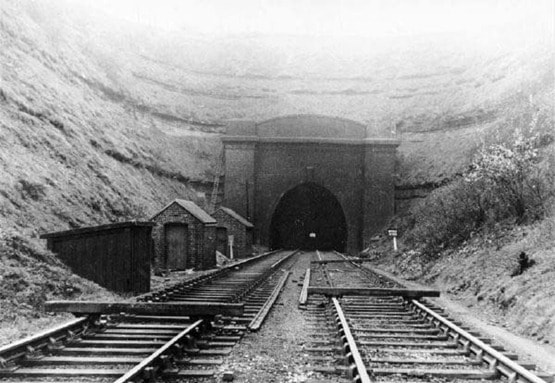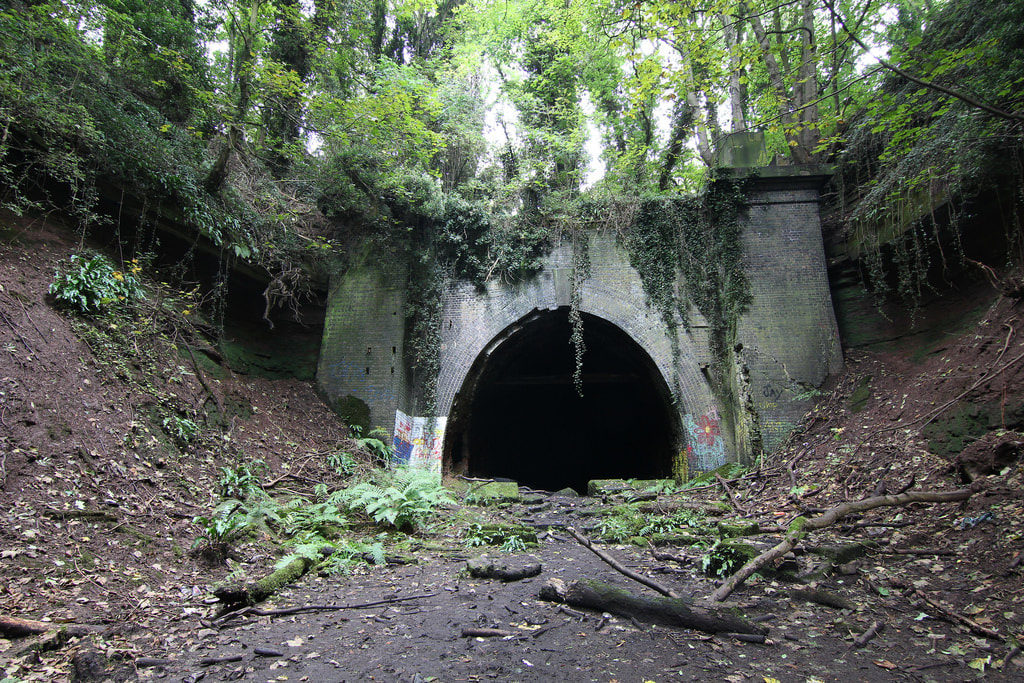The beginning
Gedling station was built by the Great Northern Railway (GNR) and opened to goods traffic in 1874. Passenger services began to use the station on 1 February 1876.
It was built as part of the GNR Derbyshire and Staffordshire Extension on what became commonly known as ‘the back line’.
The station building
The design of Gedling Station followed a standard GNR pattern. Further stations down the line also kept to the same architectural blueprint.
The stations built at Daybrook, Basford North, Newthorpe and Kimberley (later Kimberley East), and others, were virtual carbon copies of Gedling.
Each was made of a single storey booking office, waiting rooms and toilets with a two-storey Station Master’s house. The roofs were steeply pitched, with tall, distinctive chimneys, and were finished in slate.
The stations all had red brick walls finished with blue brick embellishments and gable ends emphasized by broad decorative bargeboards.
The line
The line ran from Nottingham London Road Low Level Station through Netherfield, before taking a left-handed loop at Colwick towards Gedling. The track then rose steeply towards Mapperley, where it passed through a tunnel 1,132 yards long before descending to Daybrook. Continuing to Basford & Bulwell and Kimberley East it then progressed through to Derby Friar Gate Station and onwards to Eggington Junction.
GNR trains also branched off at Awsworth Junction to travel along the Leen Valley Line to Pinxton.
The main purpose of the GNR Derbyshire and Staffordshire Extension was to give the Great Northern Railway access to coalfields in Nottinghamshire, Staffordshire and South Derbyshire, while also tapping into the brewing industry of Burton-on-Trent.
The line later became part of the London & North Eastern Railway and then the London Midland Region of British Railways.
Courtesy of http://www.disused-stations.org.uk
The passengers and Gedling Colliery
Passenger services at Gedling began on 1 February 1876, enabling the residents of Gedling Village to travel to Nottingham or Derby and to minor stations in between.
During the summer months the line was used for seaside railway excursions. These tours would often begin in the heart of other mining communities, picking up passengers along the route before stopping at Gedling, and then steaming off to the East Coast via the Grantham Junction of the GNR.
The line became very busy following the opening of Gedling Colliery in 1898. Trains not only carried coal but also the colliers, who travelled to and from work on elderly worn-out carriages known as ‘Paddy Mails’.
The station and the colliery
In the years following World War II Gedling Colliery became known as ‘The pit of all nations’, with men from over 20 different countries working there. By the 1960s 10% of Gedling Colliery’s workforce came from the Caribbean.
Gedling colliery closed on 7 November 1991, having extracted 70 million tons of coal.
131 miners had lost their lives during the 93 years in which the colliery was in operation.

Sinking was commenced in March, 1900, and the Top Hard seam of coal was found at a depth of 459 yards in September, 1902. The diameter of the shaft is 18 feet, and there is about 100 yards of metal tubing fixed in the shaft to keep back the water from the water bearing strata. Two seams of coal are worked, namely :— the High Hazel, which is specially noted for its clean burning properties, and excessive heat. The Top Hard is very similar to that of the neighbouring collieries. The pits are fitted up with the most modern Engines, Steel Headgear, and up-to-date Screening Plant, capable of dealing with 3,000 tons of coal per day. The number of men and boys employed is 1,400.’ (1908 description of Gedling Colliery)
The end of the line and a new life for Gedling Station
On 4 April 1960 Gedling Station was closed to passenger traffic.
The poor condition of Mapperley tunnel, which was prone to roof collapses due to mining subsidence, was one of the main reasons. The tunnel experienced a serious partial collapse on 4 April 1960. On the other side of the tunnel, however, the line remained open for a further thirty years, carrying coal past the station until October 1991.
In 1967 the former station site was converted into a youth club. Investments from various sources saw the former sidings converted into an outside football pitch. A large gymnasium was also constructed on the front side of the station, although the main fabric of the old building remained in place beneath it (and continues to do so today).
The building operated successfully as a youth club for over 40 years. In addition, it was also used by local Scout and Guide groups and, from 1977 onwards, as the base for The Railway Children preschool (a registered charity).
When the youth club closed in 2005 the station continued to be used by other community groups.
The building was finally closed in 2012, in large part due to the need for improvements in order to ensure that this historic building met modern health and safety standards.
Further information can be found on our sister site, Friends of Gedling Station.

Mapperley Tunnel whilst in operation

Mapperley Tunnel today